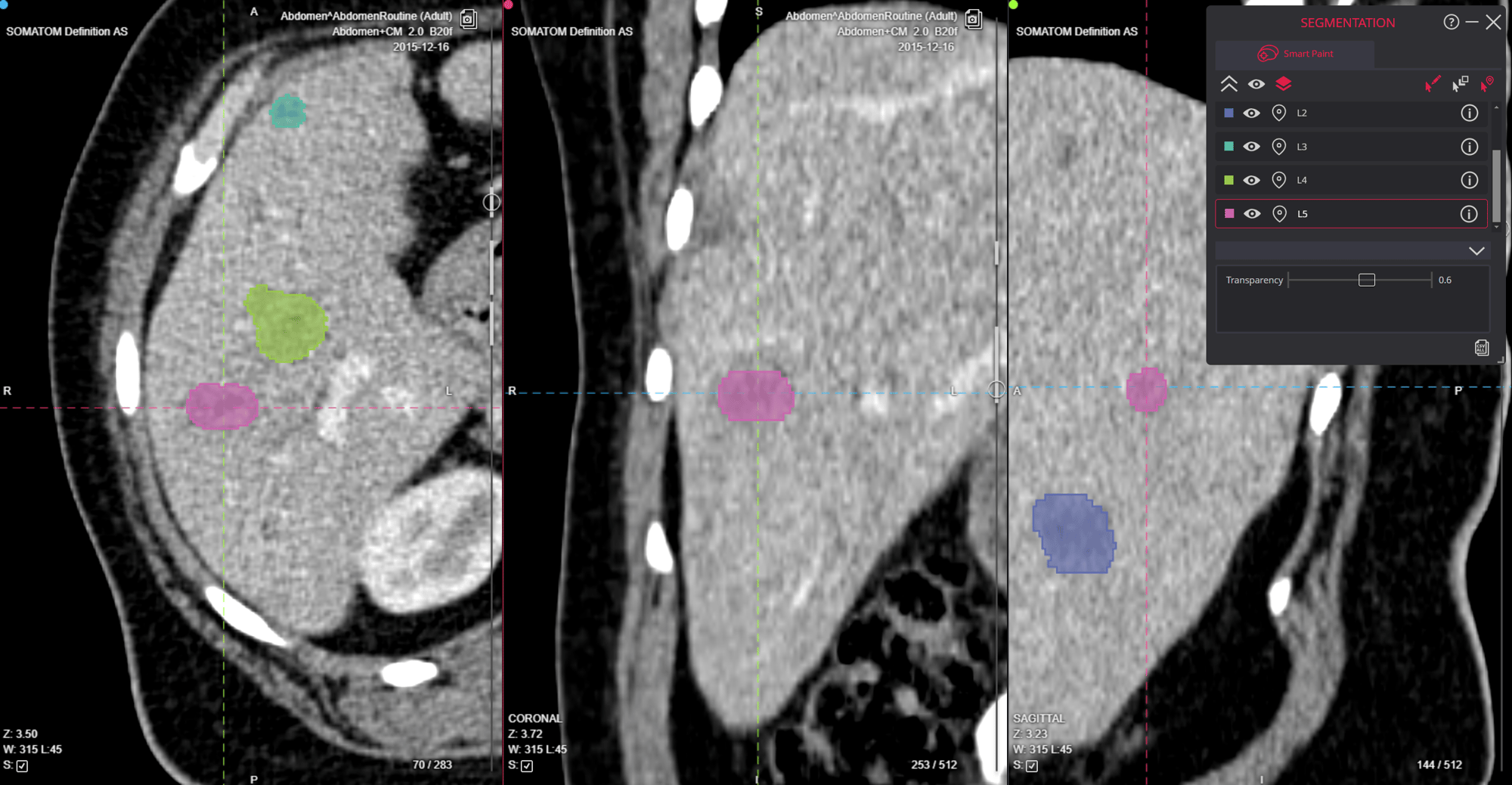Reducing Annotation Time for Medical Imaging Datasets with Collective Minds

In the fast-paced world of medical imaging, efficiency is not just a convenience—it's a necessity. Medical professionals and researchers working with imaging datasets face significant challenges when it comes to annotation and segmentation, processes that traditionally consume enormous amounts of time and resources. Collective Minds has emerged as a revolutionary solution to this problem, offering a cloud-based platform that dramatically reduces annotation time while enhancing collaboration and data integration across global teams.
What Makes Medical Image Annotation So Time-Consuming?
Before diving into how Collective Minds addresses these challenges, it's important to understand why medical image annotation is particularly demanding. Medical scans contain intricate anatomical structures that require precise identification and delineation, and accurate annotation typically requires specialized knowledge and clinical experience. Modern imaging modalities generate massive datasets that need processing, while annotations must be standardized across different annotators and research sites. Traditional annotation tools often lack efficiency features and collaborative capabilities, further complicating the process.
These challenges collectively contribute to the significant time investment required for medical image annotation—time that could otherwise be spent on analysis and patient care.
How Collective Minds Transforms the Annotation Process
Collective Minds has developed a comprehensive cloud-based platform that addresses these pain points through innovative technology and thoughtful design.
End-to-End Data Integration
One of the most powerful features of the Collective Minds platform is its integration with existing medical imaging systems.
"Collective Minds integrates with existing Picture Archiving and Communication Systems (PACS) and supports various imaging modalities. This integration allows for centralized image storage and management, ensuring consistent access to study data across multiple research sites,"
explains Anders Nordell, CEO and Co-founder of Collective Minds.
This integration begins right at the source—the modality at the scan site. The platform can receive and process images from various scanning devices, eliminating the need for manual transfers and reducing the risk of data loss or corruption. This direct connection ensures that images are immediately available for annotation, cutting down on preparation time.

Web-Based Solution: Accessibility Without Compromise
A standout feature of Collective Minds is its web-based architecture, which revolutionizes how medical professionals interact with imaging data.
"We offer a web-based solution, meaning that participants can access the necessary tools and images from anywhere, at any time, without the need for specialized hardware or software installations,"
This approach eliminates several traditional barriers. Users can access the platform through any standard web browser, and it works across desktops, laptops, and tablets. The latest features and security patches are immediately available to all users, and every user has access to the same powerful tools regardless of their local hardware. The web-based nature of the platform means that organizations can deploy it rapidly without IT overhead, and users can begin annotating images immediately without waiting for software installations or updates.
Also Read: DICOM Annotation: A Complete Guide to Medical Image Labeling
Advanced Annotation Tools That Speed Up the Process
Collective Minds provides a comprehensive suite of annotation tools specifically designed for medical imaging. The platform includes multiple specialized tools that significantly reduce the time required for accurate annotations, such as Bounding Box for quickly defining regions of interest with rectangular selections, Free Draw or Smart Paint for creating precise freehand annotations for irregular structures, advanced measurement tools for precise quantification of anatomical structures, Multi-Planar Reconstruction (MPR) for visualizing images in various planes (axial, coronal, sagittal), and PET-CT, MR and NM Fusion for overlaying different imaging modalities for comprehensive analysis.
These tools are designed with medical professionals in mind, offering intuitive interfaces that reduce the learning curve and allow users to focus on the annotation task rather than figuring out how to use the software.
Collaborative Features: The Power of Many Minds
Perhaps the most transformative aspect of Collective Minds is its collaborative approach to annotation.
"The platform supports collaborative features that enable users to work on annotations. This fosters teamwork among healthcare professionals and researchers, streamlining the annotation process and reducing the time required to complete projects,"
This collaborative environment includes annotation sharing, where users can easily share annotations with colleagues for review or collaboration, and global participation, which involves experts from around the world in annotation projects. Standardized workflows ensure consistency across different annotators through standardized protocols, while quality control mechanisms provide peer reviews and validation checks to maintain high standards.
By enabling multiple experts to work together, Collective Minds not only speeds up the annotation process but also improves the quality and reliability of the annotations.
Also Read: Top Radiology Image Sharing Platforms: A Comprehensive Guide for Healthcare Providers
Real-World Benefits: Time Savings and Beyond
The combination of these features translates into significant real-world benefits for organizations using Collective Minds. Users of the platform report substantial time savings in their annotation workflows through streamlined protocols that reduce decision-making time, parallel processing where multiple annotators can work simultaneously, and reduced administrative overhead with less time spent on file management and transfers.
Beyond just saving time, the platform improves the quality of annotations through standardized approaches that ensure consistent methodology across all annotators, expert collaboration where multiple specialists can contribute their expertise, quality control with built-in validation mechanisms to ensure accuracy, and version control that provides comprehensive tracking of all changes and annotations.
The accessibility of the platform enables wider participation in research projects through global reach, where experts from around the world can contribute, reduced barriers to entry with no specialized hardware or software required, and flexible participation where contributors can work from any location at any time.
Also Read: Medical Imaging Research: Breakthroughs in AI and Advanced Technologies
Practical Applications Across Medical Fields
The Collective Minds platform is being utilized across various medical specialties. In clinical trials, the platform helps standardize image analysis across multiple research sites, ensuring consistent data collection and interpretation.
"Collective Minds Research is trusted by researchers and pharmaceutical companies. The platform's commitment to data accuracy, trial efficiency, and reduced operational burdens makes it a valuable tool for CROs and pharmaceutical companies engaged in clinical research,"
In radiology research, the platform's advanced visualization and annotation tools make it ideal for quickly identifying and annotating regions of interest in complex scans. For AI model development, by streamlining the annotation process, Collective Minds accelerates the creation of training datasets for machine learning models, helping advance the development of AI in medical imaging.
Also Read: Global Collaboration and Population-Size Data in Medical Imaging AI Research
Security and Compliance: Protection Without Compromise
In healthcare, data security is paramount. Collective Minds addresses these concerns comprehensively with GDPR compliance, ensuring the platform is fully compliant with data protection regulations. The platform is built with privacy as a fundamental principle, and patient data is de-identified and pseudonymized. All data transmissions are encrypted, and comprehensive tracking of all system activities is maintained through audit trails.
These security features ensure that organizations can leverage the benefits of cloud-based collaboration without compromising patient privacy or regulatory compliance.
Introduction to Collective Minds Research for MedTech, CROs and Pharma
FAQ: Common Questions About Collective Minds
How does Collective Minds ensure data security?
Collective Minds employs privacy-by-design technology, with GDPR compliance and comprehensive security measures including data de-identification, encryption, and detailed audit trails.
Can Collective Minds integrate with our existing PACS system?
Yes, the platform is designed to integrate with existing Picture Archiving and Communication Systems, allowing for centralized image storage and management.
Is specialized hardware required to use Collective Minds?
No, Collective Minds is a web-based solution that works through standard web browsers, eliminating the need for specialized hardware or software installations.
How does the collaborative annotation feature work?
The platform allows multiple users to work on annotations, with standardized workflows ensuring consistency across different annotators.
Can Collective Minds handle different imaging modalities?
Yes, the platform supports various imaging modalities including CT, MRI, PET-CT, and others, with specialized tools for each type of image.
Conclusion: Transforming Medical Image Annotation
Collective Minds represents a significant advancement in medical image annotation technology. By combining end-to-end data integration, web-based accessibility, advanced annotation tools, and collaborative features, the platform dramatically reduces the time required for annotating medical imaging datasets.
For healthcare organizations and research institutions looking to streamline their imaging workflows, Collective Minds offers a solution that not only saves time but also enhances the quality and consistency of annotations. In an era where efficiency and collaboration are increasingly important in healthcare, Collective Minds is helping to accelerate medical research and improve patient outcomes through faster, more accurate image analysis.
Reviewed by: Carlos Santín Carballo on October 21, 2025




